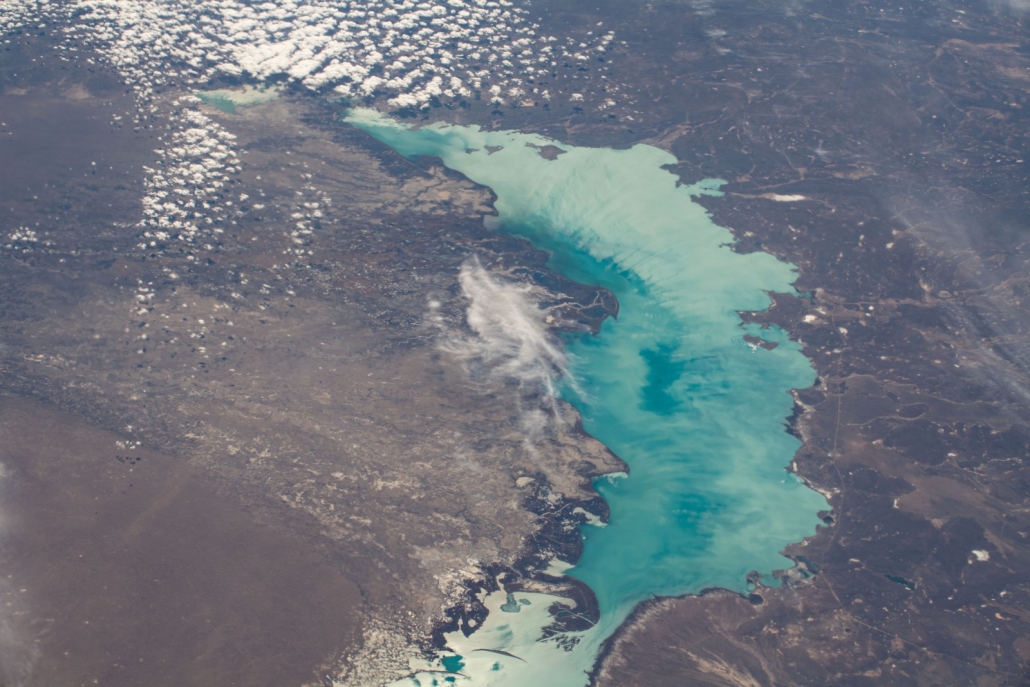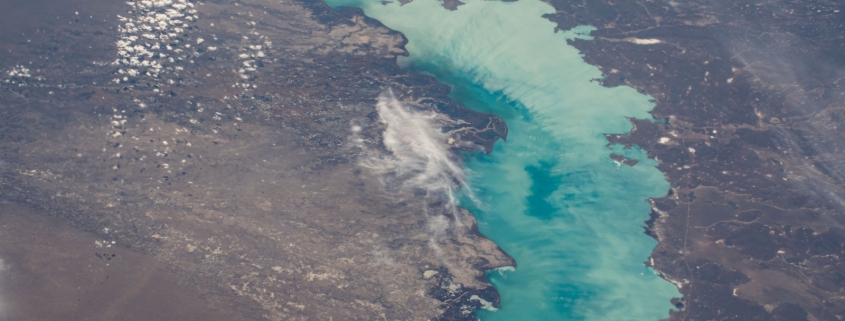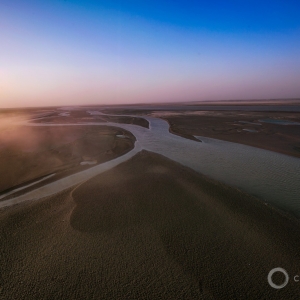HotSpots H2O: Kazakhstan’s Lake Balkhash Is Disappearing, Continuing a Trend of Desiccation in Central Asia

Photo © NASA Johnson
By Christian Thorsberg, Circle of Blue
Viewed from space, the Balkhash drainage basin resembles a shape of life: many thin blue veins, flowing towards their heart. The likeness is fitting, as survival in southeastern Kazakhstan, an area exposed to dusty winds and extreme heat, depends on Lake Balkhash and the seven rivers that empty into it. For decades this water system has been endangered by increased evaporation and the extraction of water for agriculture. In 2021, over 3 million people are feeling the effects of a hydrological vanishing act: the shrinking of the blue waters of Central Asia’s largest lake into a dehydrated landscape of greens and browns.
Lake Balkhash, which stretches nearly 400 miles east-to-west and is the world’s fifteenth-largest lake by surface area, has no outlet. Its poor health is thus a consequence of increasingly meager inflows. The Ili River, which contributes more than three-fourths of the lake’s water, has become the key choke point.
Flowing from northwest China, Ili runoff has decreased consistently since the 1970s, and in the last twenty years, land area used for agriculture and crop harvesting along the Ili in China has expanded by 30 percent. Plans to boost rice production, a particularly thirsty crop, augurs poorly for Lake Balkhash’s falling water levels. Inflows will, in the short term, be boosted by increased melt rates from the region’s glaciers. But after warming temperatures exhaust the glaciers, inflows will again decrease, highlighting the need for better and immediate water management.
There are hurdles there, too. A lack of water-efficient irrigation systems exacerbates the water-balance problem, as does a growing mining industry in both Kazakhstan and northern China. According to the Caspian Policy Center, “the Balkhash Mining and Metallurgic Combine annually emits around 600 thousand tons of industrial waste, including lead, zinc, and copper.” Regulating water contamination and collecting pollution data is made difficult by the Ili River’s transboundary nature.
Losing Lake Balkhash would also spell an end to a special slice of biodiversity. Among the basin’s delta residents, over 60 species of plants, 12 endangered birds, and six species of fish are found nowhere else on earth. With the lake’s eastern end saline, and western coast a murky freshwater habitat, animals who have for so long adapted to and thrived in variable environments are facing their final match in the changes humans bring.
For Kazakhstan, this agglomeration of consequences in the southeast presents a tragic geologic symmetry. The Aral Sea, located in the country’s southwest and once the fourth-largest lake in the world, began shrinking in the 1960s and largely dried up in the 2010s. Large-scale water diversions to irrigate cotton in the desert and chemical pollution were the root causes of the ecosystem’s collapse.
Experts fear Lake Balkhash is following in its sibling’s footsteps. “I imagine that the wetlands of the Ili Delta look like the wetlands around Aral Sea 50 years ago,” Niels Thevs of the University of Greifswald and the Central Asia office of the World Agroforestry Center, told the NASA Earth Observatory.
Christian Thorsberg is an environmental writer from Chicago. He is passionate about climate and cultural phenomena that often appear slow or invisible, and he examines these themes in his journalism, poetry, and fiction.






Leave a Reply
Want to join the discussion?Feel free to contribute!